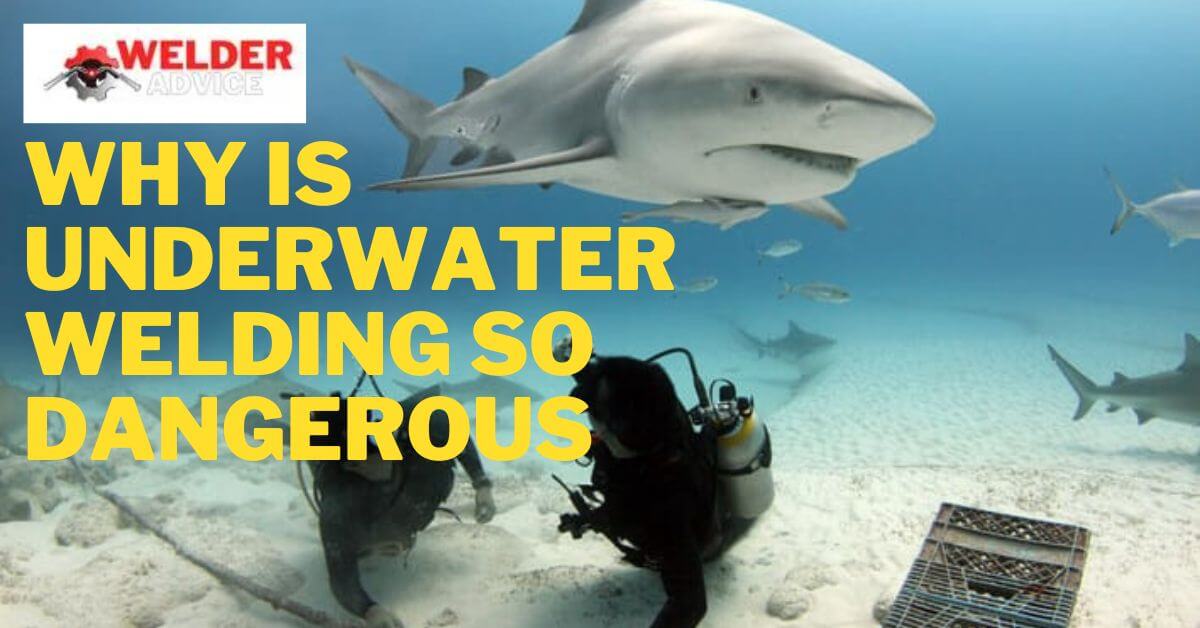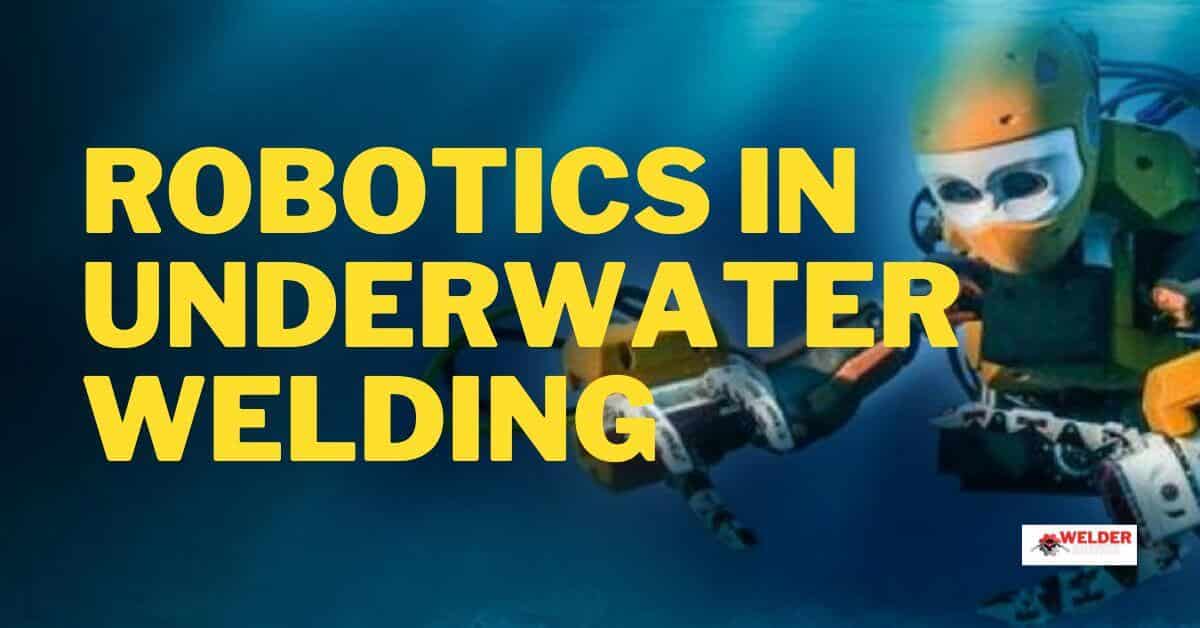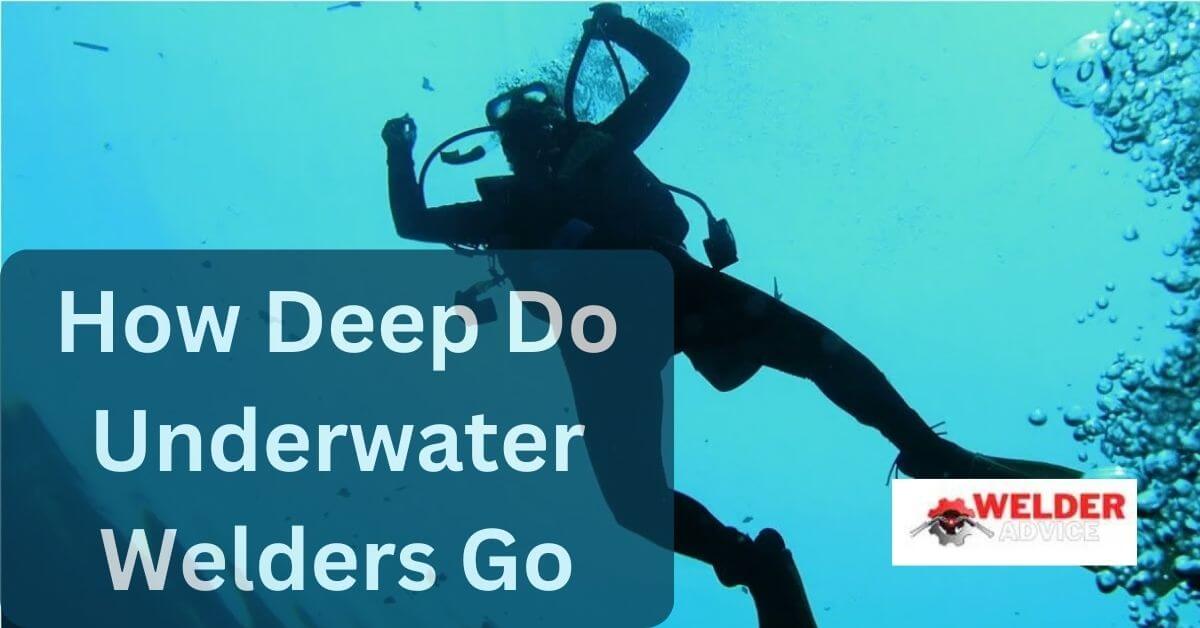Underwater welding is a highly specialized skill that requires a great deal of training and expertise. It is a dangerous job due to the unique environment and potential hazards of working in such an environment. This article will explore why is underwater welding so dangerous and what safety measures are necessary to complete this job successfully. We will also look at some common causes of injury or death related to underwater welding. As well as, employers took steps to ensure the safety of their workers. Finally, we will discuss the importance of proper training and experience when performing underwater welding safely.
- Why is underwater welding so dangerous?
- Is underwater welding The most dangerous job?
- Does underwater welding shorten lifespan?
- Future of Underwater Welding
- How do underwater welders not get electrocuted?
- Using specialized welding equipment
- Grounding the workpiece
- Using a dry environment
- Using a safety rope
- Proper training and procedures
- Using a specialized underwater welding power source
- Is underwater welding the most dangerous job in the world?
- Do underwater welders get attacked by sharks?
- Is underwater welding hard on your body?
- How long can underwater welders work?
- If Underwater Welding is So Dangerous, Why Choose it?
- Is Underwater welding worth it?
- What type of welding is Used underwater?
- Final Thoughts
Why is underwater welding so dangerous?
Hazards of Underwater Welding
Physical hazards
Underwater welding poses several physical hazards to the welder. These include:
Drowning: Welders risk drowning if their equipment fails or if they become disoriented.
Hypothermia: Welders are exposed to cold water temperatures, which can lead to hypothermia.
Sickness: Welders risk decompression sickness (DCS) if they ascend too quickly after welding.
Electric shock: Welders are at risk of electric shock if they come into contact with live electrical circuits.
Environmental hazards
Underwater welding also poses many environmental hazards. These include:
Underwater currents: Welders risk being swept away by underwater currents.
Limited visibility: Welders are at risk of not being able to see what they are welding due to limited visibility underwater.
Marine life: Welders risk encountering dangerous marine life, such as sharks and stingrays.
Psychological hazards
The psychological hazards of underwater welding include the following:
Stress: Welders are under a great deal of stress due to the dangerous nature of the job.
Isolation: Welders are often isolated from other people for long periods.
Is underwater welding The most dangerous job?
Underwater welding is considered one of the most dangerous jobs due to the unique hazards of working underwater. The risk of drowning, electric shock, and fire or explosion are all significant risks that you must train welders to handle. In addition to these risks, welders may face physical challenges such as hypothermia and the need to move around in heavy diving gear.
However, it is essential to note that many other dangerous jobs exist in various industries. For example, employment in the construction and mining industries, as well as jobs in the commercial fishing industry, are also considered to be high-risk. These jobs may also involve heavy machinery, heights, hazardous materials, and other safety risks.
It is also worth mentioning that even though it can be dangerous, underwater welding is also essential, as it allows for the maintenance, repair, and construction of ships, oil rigs, and other submerged structures.
Does underwater welding shorten lifespan?
It is not clear if being an underwater welder necessarily shortens lifespan. However, the job has certain health risks that may impact an individual’s overall health and well-being.
One of the main concerns is the risk of decompression sickness (DCS), also known as the bends, which can occur when a diver ascends too quickly after spending time at depths. It can cause joint pain, paralysis, and even death if not treated promptly.
Another concern is the risk of lung damage due to breathing compressed air for extended periods. It can cause pneumothorax (collapsed lung) and lung barotrauma.
Working underwater can also expose welders to toxic gases and other hazardous materials, which can have long-term health effects.
Future of Underwater Welding
As technology continues to advance, the future of underwater welding looks bright. One of the key developments in the field is the increasing use of remotely operated underwater vehicles (ROVs) for welding tasks. These vehicles are equipped with advanced sensors and cameras, allowing welders to perform their work remotely from the surface. This technology makes the welding process safer and allows for more precise and efficient welding.
Another area of innovation in underwater welding is using hybrid welding techniques. These techniques combine traditional welding methods with newer, non-destructive technologies such as ultrasonic and laser welding. It can result in more robust, durable welds with minimal damage to the surrounding structure.
Automation and robotics are also becoming more prevalent in underwater welding. Robotic systems can be programmed to perform specific welding tasks, such as welding in hard-to-reach areas or harsh environments. It can help to increase productivity and reduce the risk of accidents.
The increasing use of renewable energy sources such as wind and solar power also drives the demand for underwater welding. As more offshore wind farms and ocean-based solar power systems are built, welders will be needed to install and maintain these structures.
How do underwater welders not get electrocuted?
There are several ways that underwater welders can prevent electrocution while working. Some of the key measures include:
Using specialized welding equipment
Welders must use equipment that is specifically designed for use in an underwater environment. High-voltage currents typically power this equipment, and it must safely handle these currents to avoid the risk of electrocution.
Grounding the workpiece
Welders must ensure that the workpiece they are welding is adequately grounded. It helps to prevent electrical current from flowing through the welder’s body.
Using a dry environment
Welders must work in a dry environment to avoid the risk of electrical shock. It is typically achieved using a dry suit or a diving bell to keep the welder dry.
Using a safety rope
Welders must use a safety rope to quickly and safely pull to the surface in an emergency.
Proper training and procedures
Welders must receive specialized training in properly using welding equipment and safely handling electrical currents. They must also follow appropriate safety procedures to minimize the risk of electrocution.
Using a specialized underwater welding power source
These power sources are designed to work underwater and protect against electrical shock. They are equipped with over-current protection, meaning the power source will shut down automatically in case of a short circuit.
Also Read:
Is underwater welding the most dangerous job in the world?
Underwater welding is considered dangerous due to the unique hazards of working in an aquatic environment. However, it is essential to note that many other jobs are considered to be even more dangerous.
Some of the jobs that are considered to be more dangerous than underwater welding include:
Logging
Logging is considered one of the world’s most dangerous jobs, with a high risk of accidents and injuries due to heavy machinery and dangerous equipment.
Commercial Fishing
Commercial fishing is considered one of the most dangerous jobs in the world due to the harsh weather conditions, heavy equipment, and the risk of capsizing.
Roofing
Roofing is considered to be a dangerous job due to the risk of falls from heights and exposure to hazardous materials.
Mining
The mining industry is considered one of the most dangerous in the world, with a high risk of accidents and injuries due to heavy machinery and exposure to hazardous materials.
Construction
Construction work is also considered dangerous due to the risk of falls, heavy machinery, and exposure to hazardous materials.
These jobs are considered more dangerous than underwater welding as they have a higher rate of fatalities and accidents.
Check this out: Hobart Handler 140 review
Do underwater welders get attacked by sharks?
While underwater welders can encounter sharks, it is considered a rare occurrence. Sharks typically avoid areas with a lot of human activity and noise and are not naturally attracted to the bright lights and sparks associated with welding.
However, it’s important to note that welders work in different environments. Some of them, such as shipwrecks, oil rigs, or offshore platforms, may be located in areas where sharks are more common. In these cases, welders are trained to take the necessary precautions to avoid potential shark encounters.
Precautions include, but are not limited to:
- Knowing the shark activity patterns of the location where the work is taking place.
- Using shark shields, which emit an electric field to deter sharks.
- Avoiding working in areas known for shark activity during certain times of the year.
- Having a plan in case of an encounter.
Is underwater welding hard on your body?
Underwater welding can be physically demanding and negatively affect the body if proper precautions are not taken. The combined effects of high pressure, cold water, and heavy equipment can lead to hypothermia, decompression sickness, and cardiovascular strain.
How long can underwater welders work?
The length of time that an underwater welder can work can vary depending on several factors, including the specific conditions of the job, the welder’s training and experience, and the safety measures in place.
In general, underwater welding projects are often shorter in duration than topside welding projects, as underwater conditions can be challenging, and the equipment and techniques are specialized.
Welders are required to follow strict safety protocols and guidelines, such as diving tables, to avoid decompression sickness. They often are needed to surface and decompress for a certain period before diving back.
In some cases, an underwater welder may only be able to work for short periods, such as a few minutes at a time, before needing to surface and rest. In other cases, an experienced welder who is appropriately trained and equipped may be able to work for more extended periods.
If Underwater Welding is So Dangerous, Why Choose it?
Despite the inherent risks, underwater welding is still a valuable and necessary profession in specific industries. Some reasons why people may choose to pursue underwater welding include the following:
High demand for skilled underwater welders: The demand for skilled underwater welders is high in specific industries, such as oil and gas, marine construction, and ship repair.
High earning potential: Underwater welders often earn higher salaries than other types of welders due to the specialized nature of the work and the increased risk.
The challenge: Some people may find the challenge of working in a demanding and unpredictable environment to be rewarding and fulfilling.
The opportunity to work on interesting projects: Underwater welding projects can be diverse and interesting, including work on ships, offshore oil rigs, bridges, and other structures.
Career advancement: Underwater welding can be a stepping stone to other careers in the diving and underwater industry.
Is Underwater welding worth it?
Whether or not underwater welding is worth it is a personal decision that depends on an individual’s goals, values, and priorities. It is a profession that has its own set of unique challenges and rewards.
One of the main benefits of underwater welding is the high earning potential, as it is considered a highly skilled and specialized profession with a high demand in specific industries.
What type of welding is Used underwater?
The most common type of welding used underwater is Shielded Metal Arc Welding (SMAW), also known as “stick welding.” This method uses a consumable electrode coated in flux to shield the weld from the surrounding water. The arc is struck between the electrode and the metal, creating a weld. The flux coating on the electrode also produces a slag that must be chipped away after the weld is complete.
Gas Tungsten Arc Welding (GTAW) or Tungsten Inert Gas (TIG) welding is also used underwater. This method uses a non-consumable tungsten electrode to create the arc, and a separate filler metal is added to the weld. This method is considered more precise and requires more skill to perform.
Gas Metal Arc Welding (GMAW) or Metal Inert Gas (MIG) welding is also used but is less common due to the difficulty in keeping the equipment dry and the shielding gas flowing correctly.
Final Thoughts
Underwater welding is a highly skilled and dangerous profession that requires specialized equipment and training. The hazards of underwater welding include physical, environmental, and psychological risks. To mitigate these risks, welders must take safety precautions such as using appropriate equipment and receiving proper training. Despite the challenges, underwater welding is an essential aspect of many industries and helps maintain and build infrastructure underwater. Commercial divers and welders need to be aware of the risks and take the necessary steps to protect themselves while performing their job.





